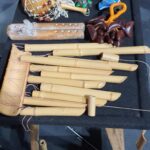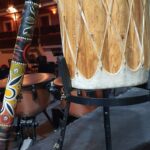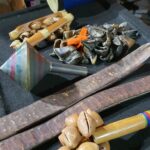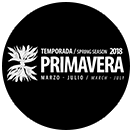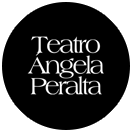Percussion instruments of pre-Hispanic origin will enrich the multiplicity of sound effects during the interpretation of Misa Azteca, a composition by Mexican-American Joseph Julián González, who comes to Mazatlán to enjoy the assembly of his work this Saturday October 7th at eight at night at the Ángela Peralta Theater.
The public can enjoy pre-Hispanic, classical, flamenco and baroque rhythms in this great concert with more than 100 artists on stage and the direction of maestro Gordon Campbell. Participating are musicians from the Camerata Mazatlán, the Ángela Peralta Choir, tenor Eduardo Tapia, soprano Wendy García, mezzo-soprano Rosa Ferreiro and dancers from the Folkloric Ballet of the Instituto de Cultura de Mazatlán.
“Attending will be a joy for the soul, I think it is a very interesting work, that it is a Mexican-American composer who has had the creativity and ingenuity to mix these sounds and these styles in this vision of endorsing our roots and our origins,” said maestro Max Carreón, member of the percussion section of the Camerata Mazatlán who will bring originality, versatility and virtuosity to the concert.
When talking about instruments of pre-Hispanic origin, Max Carreón highlighted that there are few musical pieces of good manufacture, professional workmanship and at a good level that involve the theme of pre-Hispanic.
“There are some operas and some pieces from the classical period, but Misa Azteca is very recently created, innovative, it will strengthen us all, it will fill the national spirit that is so important to be happy, to be good citizens and better people, and to be more complete human beings, knowing our identity, where we come from and where we want to go.”
He assures that the six percussionists who, in addition to symphonic percussion, will provide the sound of instruments of pre-Hispanic origin in the Aztec Mass will play a decisive role and will be eager to put on a good show.
“Having access to pre-Hispanic instruments, and an instrument like the marimba, a 100% Mexican invention, feels very appropriate in the world of percussion, in this case the mixture of somewhat flamenco, classical, baroque rhythms is also interesting. Because it has been part of our training and our professional development, it is very satisfactory that we can show and shine with these instruments,” highlighted Max Carreon.
During the concert the audience will hear the sound of the Ayoyotles but Max highlighted the sound of the two most representative instruments in the ceremonies of pre-Hispanic culture: the Teponaztli and the Huéhuetl.
“The Teponaztli is a hollowed trunk and has two reeds drawn to produce two tunings, it is a wooden sound but with body, with depth, and they are very beautiful hand-carved trunks, and the Huéhuetl is a larger trunk with a membrane , a patch of animal stretched on one of the banks,” he described.
The prominent percussionist adds that these instruments have been found in all pre-Hispanic cultures, in the Inca, Mayan, and Aztec, although with different names, but with the same principle, and are complemented with other ornamental instruments such as whistles, in general, imitating the singing of birds.
“There are several whistles, ceramic flutes, clay flutes, double flutes, air drums, perhaps some are perfected in a modern way to emit that type of atmosphere, let’s say, from nature,” he concluded.
Tickets to attend Misa Azteca, which sold out at Carnegie Hall, the Sorbonne in Paris, the Sydney Opera House and the Walt Disney Concert Hall, cost $400 more info at 669 982 4446 ext. 103 or at the digital box office at 669 120 00 20.


